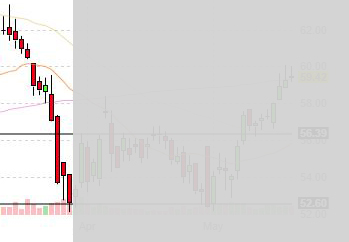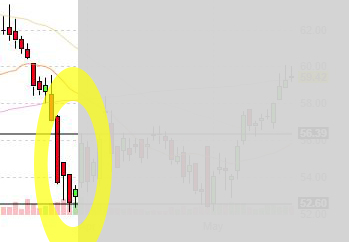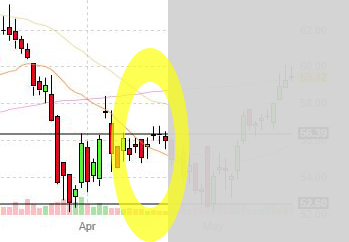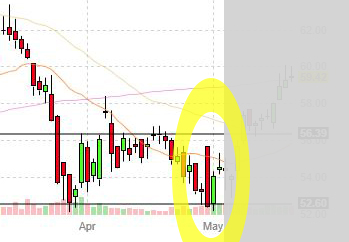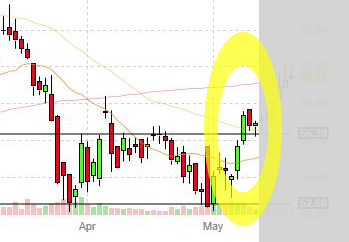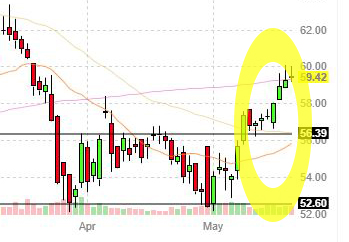When trends change from bearish to bullish (or vice versa) there are indicators that the seasoned trader is looking for. The Double Bottom Reversal marks a medium or long-term change in trend. The reversal is from bearish to bullish. Keeping an eye out for possible fake moves, there are six different points that happen for the pattern to be confirmed. Let’s take a look at each of those points using a May 2018 chart of GVA.
The Setup
As with all reversals, a trend must already be taking place. The longer the trend, the more substantial the double bottom reversal could be. In this case, the stock should be trading in an downtrend (bearish trend).
Pattern Details
Here’s how the double-top pattern is created and the specific points you want to look out for during formation and to confirm that the pattern is complete. Look for the 1st Top, a Decline that turns around and leads to a 2nd Top, followed by a decline, support breakdown that turns to resistance and increased volume. Let’s look at each of these in more detail.
1st Bottom
Stocks commonly hit a new low and retreat. That in itself is nothing new. In the case of the reversal pattern, a new low should be hit and a retreat happen. Since this happens in stocks all time, it doesn’t mean much by itself.
Increase
If the retreat from the low is 10% or more and then turns back to the negative, you may be on your way to witnessing the formation of a double bottom pattern. Not every high that happens is a one-bar occurence so don’t be fooled by a multiple session high that eventually turns negative and starts to fall back down to the previous low.
2nd Bottom
Once the stock falls to the previous low, it is expected to meet with support. Since this is common, it doesn’t mean that you have a double-bottom forming – it only means you are one step closer. Typically, the second bottom isn’t exactly the same low as before. A variation of around 3% is close enough.
Increase from Bottom
As the stock starts to rise from the second bottom, you should notice an increase in volume. This increase will tell you that the bulls are gaining strength and will be testing the previous resistance soon.
Resistance Breakdown
Once the stock rises to the previous resistance level, the pattern still isn’t complete. You still need to have an increase in volume and a faster gain than normal. Once the stock breaks through resistance and heads higher, the pattern is complete.
Resistance Turned Support
As happens in stock trading, resistance that is broken becomes support for the future. During the formation of the pattern, a stock will sometimes fall to test the new support – which will give a trader another chance to get out of a bad position or to start a new long position in the stock.
Now What?
If you decide to take a new long position because of the break of previous resistance, then you should do some quick math to find your possible future exit price. Typically, the distance from the break of resistance down to the bottom of the pattern will tell you how high you could expect the stock to rise. As in all stock trading this is only an approximation and other factors should be included in calculating your exit price in your trading plan.
Final Thoughts
To wrap this all up, it’s important to make sure that the stock you think is forming a double bottom meets the six criteria. It should be in a long downtrend, hit a first bottom then rise, hit a second bottom then rise and break the previous resistance area with increased volume. If all of that happens, you could expect that the trend has been reversed and will continue up in the future.
Additional Viewing Options:
Would you like to view a video or presentation on this topic?
Check out this video on Youtube
Download the presentation on SlideShare

